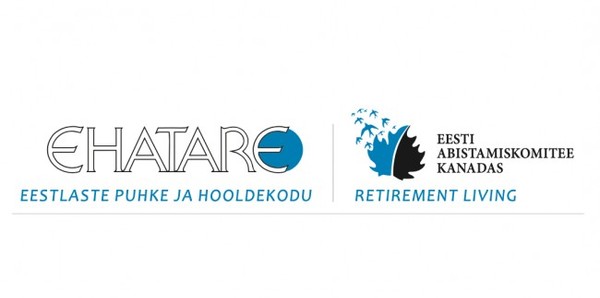Since its inception the Chair of Estonian Studies at the University of Toronto has offered university-level Estonian language instruction at three levels, leading up to literature and culture courses requiring reading competence. Professors Vello Salo and Harri Mürk established the language programme as a convivial, lively place in which to learn a language that both professors insisted was “not so difficult after all.” When I was visiting assistant professor in 1997-98, I had the pleasure of teaching the Estonian literature survey course to a student who had begun as a “true beginner” two years earlier, and who was speaking, reading, and writing Estonian fluently. By that time prof. Mürk´s Estonian language seminar had a strong reputation for a user-friendly place where “rust” could safely be peeled from one`s childhood Estonian skills, as well as a context for learning about a rich variety of topics in Estonian culture. The “language seminar” has continued less formally over the past two years, in an “independent study format” with a small number of avidly interested students, some of them parents of young children who wanted to improve their own Estonian as they taught their little ones. An experimental conversation group, “Roostevaba eesti keel” (Rustproof your Estonian) met at the Estonian House on six Saturday mornings in spring 2000, hoping to attract parents of children attending the Estonian kindergarten. Busy young parents, however, often need a breathing spell for Saturday morning shopping and other errands, as was attested by the small but faithful contingent of mothers who came regularly to the group.
The Chair of Estonian Studies has a strong interest in “getting the word” out about our language courses, all of which are offered in the evenings to accommodate people with working lives. At present, EST 200, the intermediate Estonian course at the University of Toronto is composed on the one hand of Toronto Estonians who have a childhood working knowledge of the language but are interested in polishing their skills in preparation for a longer stint in Estonia, and “significant others” of Estonians from the Toronto community. In 2001-2002 the course also included a Tallinn-born Russian University of Toronto student who is now embarked on her M.A. degree in semiotics at the University of Tartu.
Perhaps the reader is wondering why on earth one would bother to work on one`s Estonian in a formal university course given the long years spent in Heritage Language school, where, indeed many second-and third generation “diaspora kids” learned to read and write and speak as grammatically as was humanly possible. We would suggest the following six reasons for considering registering for an Estonian language course at the University of Toronto:
(1) Updating your Estonian to match your own generation: Language grows and changes, and as many “language guardians” in Estonia complain in the popular press, too many foreign words keep filtering in. On a different note, the language you learned four, five, ten, fifteen years ago in Heritage Language School is nowhere near as rich as today`s colloquial Estonian. What you learned in your grandmother`s kitchen is a lovely Estonian of yesteryear, that may even be described as quaint by your peers and younger relatives when you visit Estonia. To communicate effectively (to understand as well as speak), especially while travelling in Estonia, our idiomatic language needs updating. Wouldn`t you like to understand what the folks on the Delfi internet newsline are really saying? Estonian cyberspeak is a hilarious, often offensive, but colourful mixture of colloquial spoken and written language, and we use it frequently for illustration and vocabulary enrichment in our intermediate level courses and seminars.
(2) Make a few substitutions in your recipe for “segapudru,” (mixed porridge) which is the euphemism second-generation kids (sometimes rebelling a little against the rituals of Heritage Language school) learned to use for the mixture of Estonian and English that got the point across when you couldn`t find the right word in Estonian. It is purportedly the language of choice in the Estonian House for the 45 and under set. Find some of the lost words, and create a smoother porridge. “Segapudru” is not the ideal Estonian dialect to impart to your children, either, which brings up the third reason...
(3) The language you try to teach your children will be only as good as your own. Grandmothers and grandfathers, despite their devotion, cannot do the whole job, even with the help of the Heritage Language Programs. The author of Estonian has seen from real home “field experience,” that the linguists are right: what teaches children the most (aside from an immersion experience of two or three months) is not the language of the Aabits (ABC book), but overhearing the conversation of adults speaking Estonian on an adult level. This need not be painstakingly grammatically correct, but a few declensions thrown into the mixture would not hurt, and make for more inherent interest than the boring old nominative. Besides, linguists Ilse Lehiste and Juta Kõvamees-Kitching have demonstrated in recent research based on a survey that one of the areas of grammar that breaks down fastest among Estonians abroad with English as the dominant language in their environment is the distinction between partitive and nominative (total versus partial object), and that Estonians born after 1962 are totally partitive-blind...A formal university course can tell you what the partitive is, help you understand why you use the language the way you do, and address these problem areas in a friendly, failsafe environment, with no language police or frowning elders in the background.
(4) Using your Estonian elegantly and correctly in formal settings. In the context of community organizations many of us have nailbiting, nervewracking occasions in which we have to make a speech in Estonian....at a wedding, funeral, family birthday, confirmation, fraternity or sorority function. By the time these occasions present themselves, many of us are several years beyond Heritage Language School graduation. If we have to put the speech in writing, spelling is a faint memory. Mistakes in such contexts are usually politely excused, because effort and good will are what counts, but correct Estonian brings warm smiles, praise, and appreciation of your decorum and care for the language that after all, has historically been the distinctive earmark of identifying yourself as an Estonian. (A similar argument applies to the newsletters sent out by the leadership of scouting and community organizations, in which to avoid embarrassment the Estonian could usually use thorough copy-editing)
(5) Growing your competence in almost any language is a function of an ongoing habit of reading in that language. Not only does reading increase and diversify your vocabulary, but it constitutes a less painful grammar workout than trying to do a set of exercises from your old Estonian textbook. Reading in a classroom setting is more convivial as well as habit-forming as sitting with your (often nonexistent) Estonian-English dictionary. This reason ties back, of course, to reason 3, which otherwise stated means, if you deliberately enrich your Estonian, the dilution factor (or the thickness of “segapudru”) in the next generation will be less.
(6) Curiosity, or your Estonian language is as complete as the city of Tallinn. Remember what the guard at the city gates said to the Old Man of Ülemiste Lake?( that apocryphal story from Heritage Language School)? The correct answer to both questions is that the city of Tallinn as well as your Estonian will never be finished and complete. Continue to learn it, deepen your appreciation of it, see your Estonian as the key to reservoirs of cultural knowledge you can scarcely imagine. It is no mean feat to know a language spoken by only one million people on the face of the planet.. and it can be a challenge and a delight to know it well.
EST 200 (Intermediate Estonian) meets throughout academic year 2002-2003 at University College Room 57 every Wednesday evening from 5 to 7 PM. If you are in doubt as to your level of Estonian, it can be assessed during the class meeting, and as far as possible, accommodation is made in the class for as wide a diversity of language skills as possible. If there is sufficient interest, a language seminar will be offered in Winter Term (January to April). Registration for the courses is free to regularly enrolled University of Toronto students. For non-matriculated students, the auditors` fee is 350 CAD, payable to the department of Slavic Languages and Literatures. Questions should be addressed to Dr. Tiina Kirss at , office phone 416 946-8945.
Why study Estonian (when you learned it in your grandmother`s kitchen)?
Archived Articles | 18 Sep 2002 | EL (Estonian Life)EWR
Archived Articles
TRENDING


















